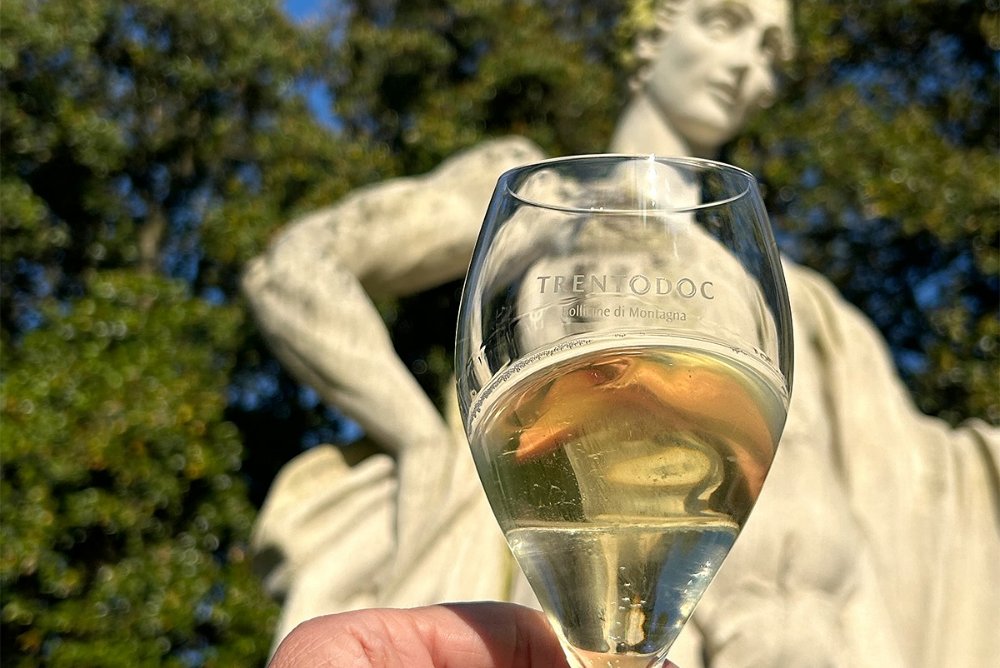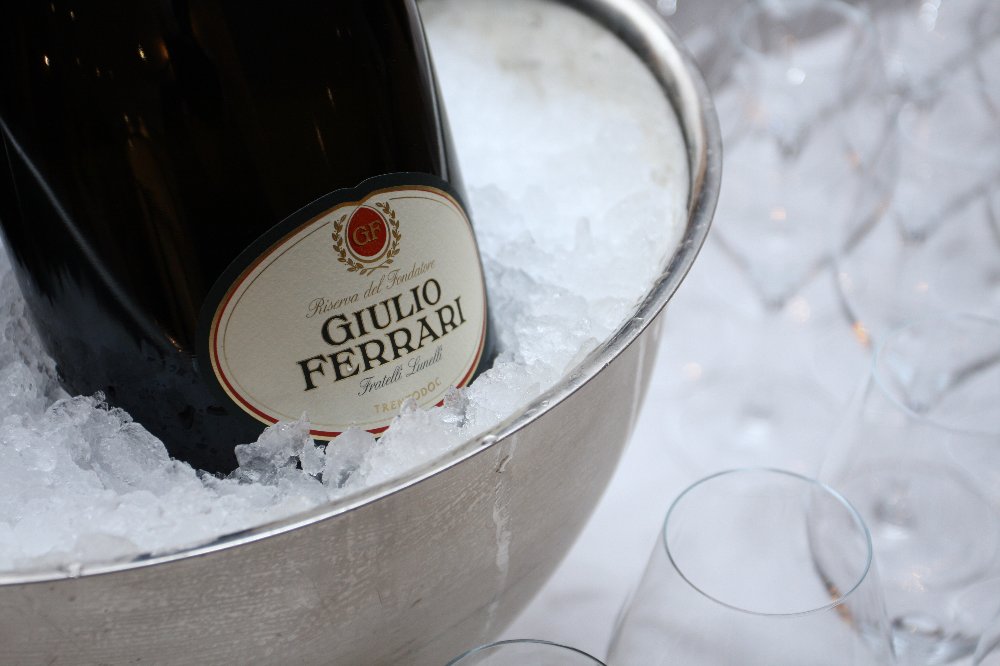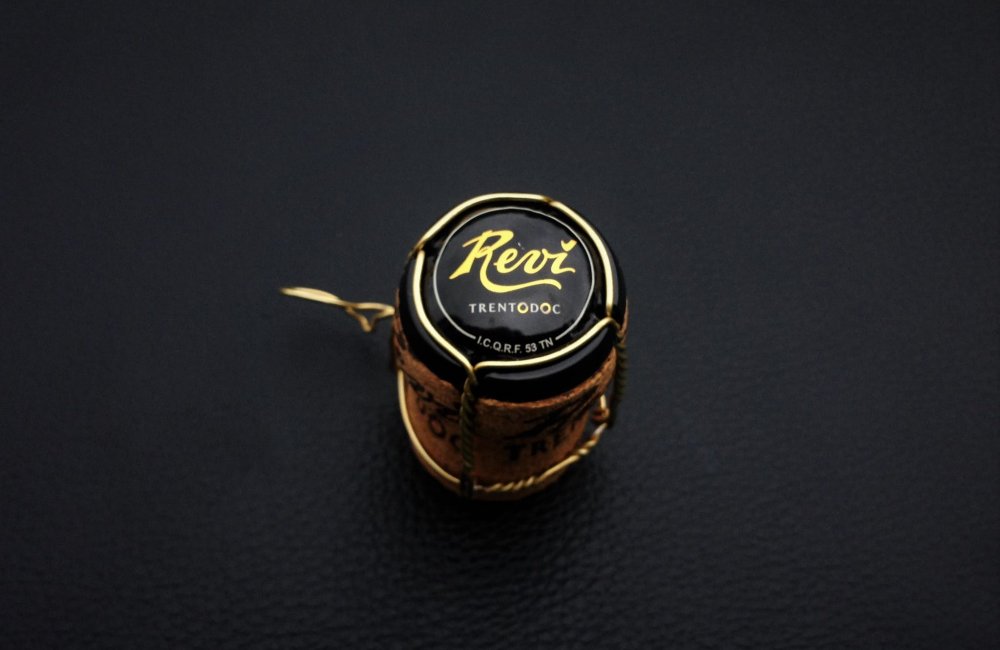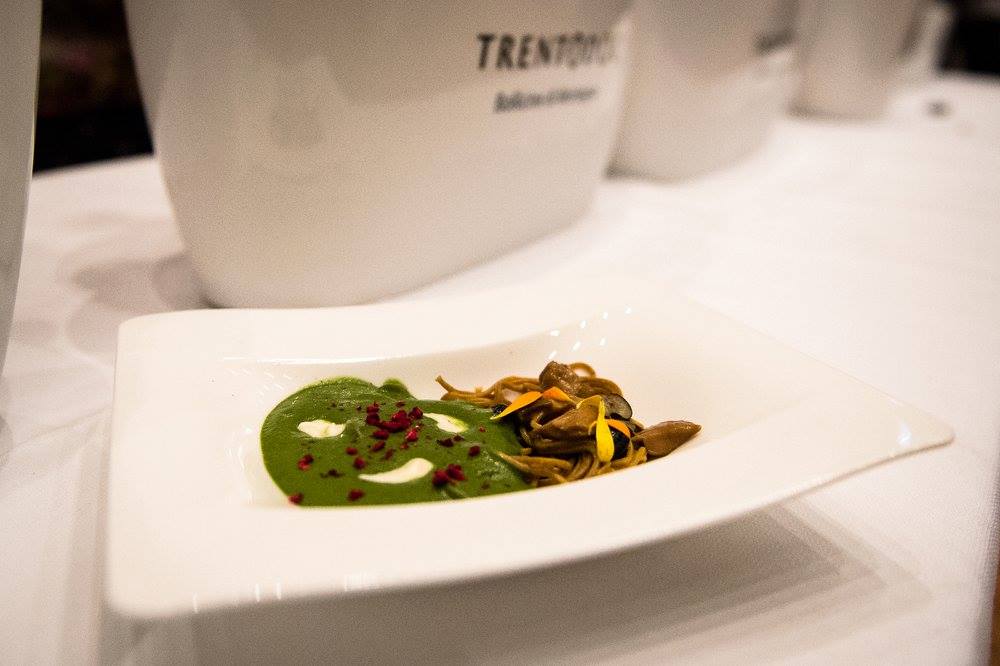
Decoding Italian Wine Classification: A Beginner’s Guide
March 7, 2025
Unlock the secrets of Italian wine classifications. Understand DOC, DOCG, and IGT to choose your perfect bottle with confidence.
By: Sara Porro / Last updated: June 11, 2025
Cyclically, the wine world seems to grow enamored with new buzzwords. Over the last 10 years, it has been all about “drinkability,” with the rise of what the French call “vins de soif,” or “thirst-quenching wines.” More and more, I find myself looking for qualifiers that don’t sound as current or exciting but tend to be more meaningful: I like “elegant” (a bit passé, I know), “precise,” and “fresh.” It’s no coincidence that these are arguably the top three adjectives to describe Trentodoc wines, which, along with Franciacorta, are Italy’s foremost traditional-method sparkling wines.

Produced exclusively in the alpine province of Trentino, the wines are shaped by their mountain origin: high-altitude vineyards ranging from 200 to 900 meters above sea level, a crisp climate, and limestone-rich soils. These factors all contribute to freshness, which in turn leads to increased durability and allows for extended aging on the lees. The result is beautiful, complex wines with outstanding aging potential.
In recent years, Trentodoc has garnered growing international recognition. With currently 68 producers united under a single appellation and brand identity, Trentodoc is increasingly perceived in the same league as Champagne.
There would be no Trentodoc without Giulio Ferrari: born in 1879, Ferrari attended the Istituto Agrario (Agrarian Institute) in San Michele all’Adige before embarking on study trips to Montpellier, Geisenheim (in Germany), and Epernay, where he became convinced of the similarities between his homeland of Trentino and the region of Champagne.
Once back home, Giulio Ferrari planted the area’s first Chardonnay vineyards, and in 1902, the first 200 bottles of the classic method sparkling wine of Trentino were produced. In 1906, at the first Milan International Exhibition, he was awarded a gold medal.

During World War II, as the German military occupied northern Italy, Giulio Ferrari took extraordinary steps to protect his wines from being confiscated: he and his associates bricked up an entire cellar in Trento, sealing in bottles that had been aging on their lees.
When they dismantled the wall after the war, the wines were found to be remarkably well preserved. This proved the durability conferred by the metodo classico and the quality of the base wine. Turns out, Ferrari had always been right: Trentino could produce sparkling wines of longevity and refinement.
In 1952, he sold the business to the Lunelli family of Trento and continued working in the winery he had founded until his passing. The wines received DOC (Denominazione di Origine Controllata) status in 1993, and in 2007, over 60 producers agreed to work under a single brand identity, applying consistent production standards and unified labeling: the formal launch of the Trentodoc brand represented a significant achievement in regional coordination—and a rare feat in Italy’s often fragmented DOC system.
A personal anecdote: During tastings for wine journalists, wines usually are presented completely blind, with the bottles covered by a black sleeve. However, at Trentodoc tastings, the names of producers are often not revealed — not even at the conclusion. The evaluation focuses solely on quality and expression, independent of branding. This reinforces Trentodoc’s collective ethos: the identity of the region is more important than any single name.
Trentino’s vineyards are situated in the foothills of the Dolomites, a UNESCO World Heritage Site, offering an ideal terroir with a unique microclimate.
Tucked away between the mountains and Lake Garda, with warm days followed by cool nights, a fluctuation that helps preserve acidity and develop complex aromas. The warm “Ora” wind blows northwards from the south every day, refreshing the air and keeping the grapes healthy, while the cooler climate contributes to the slow and even ripening of the grapes.
The altitude gradient also provides an advantage in the context of climate change. Before we discuss this, I’d like to note that this point is often oversimplified: wine growers cannot simply “move the vines higher up.” Not only do vines take years to become productive, but families are also deeply tied to specific plots of land. That being said, the region’s topographical diversity offers more options than many lower-lying appellations. Producers are already investing in clonal research, altitude trials, and precision farming to maintain quality.
As mentioned above, all Trentodoc wines are made using the metodo classico, which involves secondary fermentation in bottle and aging on lees.
When it comes to varieties, only Chardonnay, Pinot Noir, Pinot Blanc, and Meunier are permitted. Of these, Chardonnay and Pinot Noir are used predominantly: Chardonnay for its longevity and aromas, and Pinot Noir for its elegance, structure, and body.
Pinot Blanc enriches the fruity bouquet of Trentodoc. By contrast, Meunier is used less frequently, although it is appreciated for its ability to adapt to a wide range of climatic conditions and counteract acidic notes.
The aging requirements are 15 months for Non-Vintage, 24 months for Vintage wines, and 36 months or more for Riserva. That being said, the producers of Trentodoc often exceed the mandated requirements, extending the time spent on the lees to enhance the quality of each bottle further.
The most obvious example is “Giulio Ferrari Riserva del Fondatore,” which has been aged for over a decade. However, Maso Martis ages its Madame Martis Riserva for 100 months on the lees, just like Revì’s Re di Revì Riserva. Cesarini Sforza’s Aquila Reale is aged for a minimum of 90 months.
| Pas Dosé | Up to 3g/L residual sugar |
| Extra Brut | 0–6g/L of residual sugar |
| Brut | 6–12 grams |
| Extra Dry | 12–17 grams |
| Dry / Sec | 17–32 grams |
| Demi-Sec | 32–50 grams |
There is a growing trend toward low-dosage styles such as Pas Dosé and Extra Brut, and the Italian market, in particular, has shown a marked preference for these drier expressions. While it’s true that they can often be more food-friendly wines, complementing a broader range of dishes, they’re also often considered “purer,” and a preference for Pas Dosé is regarded as a trait of a wine connoisseur. Personally, I find this a bit snobbish – perfecting the recipe for Metodo Classico, including a sugar dosage that complements the base wine, is a key part of the winemaker’s talents.
The sparkling wine producers who are members of the Istituto Trento Doc pursue sustainable viticulture through their work in vineyards and wine cellars.
Trentino was the first region in Italy to implement integrated pest management as early as the late 1980s when a voluntary ‘Agreement Protocol’ was established and signed by producers across various agricultural segments. From this starting point, a culture of eco-sustainable cultivation practices emerged: many wineries have adopted solar-powered energy systems, thereby reducing their carbon footprint and ensuring clean energy use. Advanced recycling and filtration systems maximize water conservation, protecting local water sources. In the vineyards, cover cropping and thoughtful soil management reduce erosion, enhance biodiversity, and limit the need for chemical inputs. In 2016, binding phytosanitary guidelines were also introduced, including agronomic practices and limitations on the choice of products and the number of treatments.
Technological innovation is also playing a central role: drone and satellite tools enable the monitoring of vine health and the implementation of precise canopy and irrigation strategies, allowing growers to react quickly to environmental changes.
The Fondazione Edmund Mach (FEM), formerly the Istituto Agrario di San Michele all’Adige (remember this? It’s where Giulio Ferrari studied to become a winemaker!) plays a pivotal role in advancing sustainable viticulture in Trentino. Its approach integrates research, education, and practical application: basically, the FEM provides education and training programs aimed at disseminating sustainable viticulture practices.
Trentodoc encompasses a diverse range of producers, from large-scale operations to small, artisanal estates. The entire region produces about 12 million bottles annually—Ferrari alone accounts for half of that. This, combined with its long history and influence, explains why Ferrari Trento remains the region’s most iconic name. Still run by the Lunelli family, it’s known for extended lees aging and uncompromising quality. The flagship, Giulio Ferrari Riserva del Fondatore, is regarded as one of the world’s great sparkling wines.

At the other end of the spectrum are boutique producers like Maso Martis, a certified organic estate known for its long-aged Riserve and small-scale production. Revì, founded in the 1980s, focuses on precision and structure, producing elegant wines with extended lees aging. Both represent the artisanal side of Trentodoc, where quality is built through patience and attention at every step of the process. Between these are quality-driven cooperatives and mid-sized wineries, such as Rotari, part of Mezzacorona, and Altemasi from Cavit, which pair scale with precision and value. Cesarini Sforza leans towards a classical and refined style, while Letrari strikes a balance between tradition and expression.
This range, from industrial to artisanal, is Trentodoc’s strength. Regardless of scale, all reflect Trentino’s alpine terroir and a shared pursuit of excellence.
At the 2024 edition of the Champagne & Sparkling Wine World Championships (CSWWC) – founded by Tom Stevenson, one of the world’s leading experts on sparkling wine – Trentodoc received 73 medals, 29 of which were gold and 43 silver. This made it the most awarded sparkling wine in Italy.
Ferrari Trento, the most awarded of the group, has built its reputation through smart visibility rather than traditional advertising. It’s the official sparkling wine of Formula 1 and can be found in first-class airline cabins, top hotels, and Michelin-starred restaurants.
The approach is simple: put the wine where people can try it—and let it speak for itself. It’s a confident, quietly bold way of positioning Trentodoc as Italy’s answer to Champagne.

Trentodoc plays well with just about anything on the table—from aperitivo to dessert. It’s a perfect match for local stars like speck and bold alpine cheeses like Trentingrana or the wonderfully stinky Puzzone di Moena. Italians love to say that sparkling wine can “sgrassare”—basically, it scrubs the fat off your tongue – and they’re right. Trentodoc’s crisp bubbles and zingy acidity make it the ultimate palate refresher, especially when things get salty, creamy, or deep-fried.
For mains, Trentodoc complements shellfish, risotto with mountain herbs, and poultry with citrus. Trentodoc Rosé is especially well-suited to berry desserts, almond pastries, and classic millefoglie.
As is the case with high-quality Metodo Classico wines in general, these wines can be enjoyed throughout an entire meal—alongside cooked and raw fish, powerful meat dishes, risotto, pizza, sushi, fried seafood, and tempura. It’s not just for special occasions—instead, I like to think that it’s a great Trentodoc that makes the occasion truly memorable.
Discover more about the gastronomy of the Trentino Alto Adige region
If you would like us to customize an exclusive luxury tour, contact us and let us know your travel plans. We offer luxury food and wine tours for private groups of a minimum two guests. In addition, all of our private, chauffeured tours are available year-round upon request.

